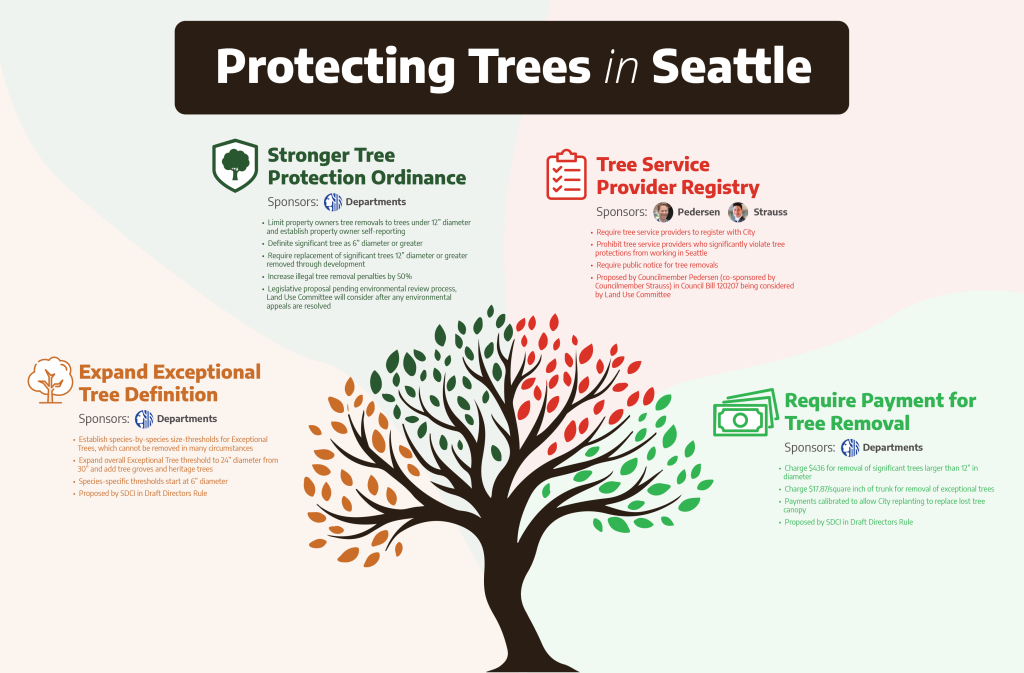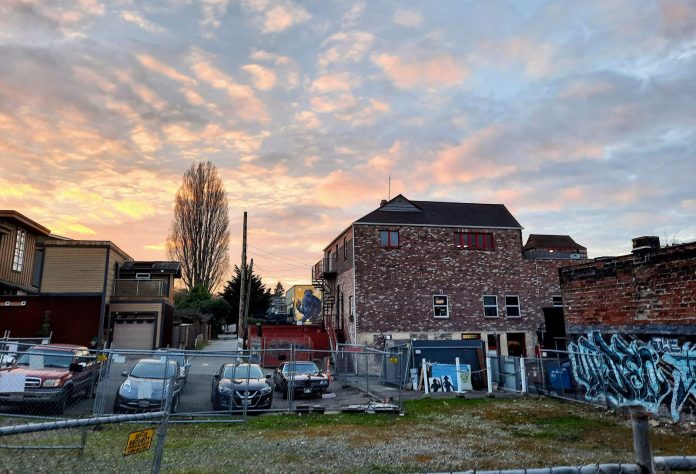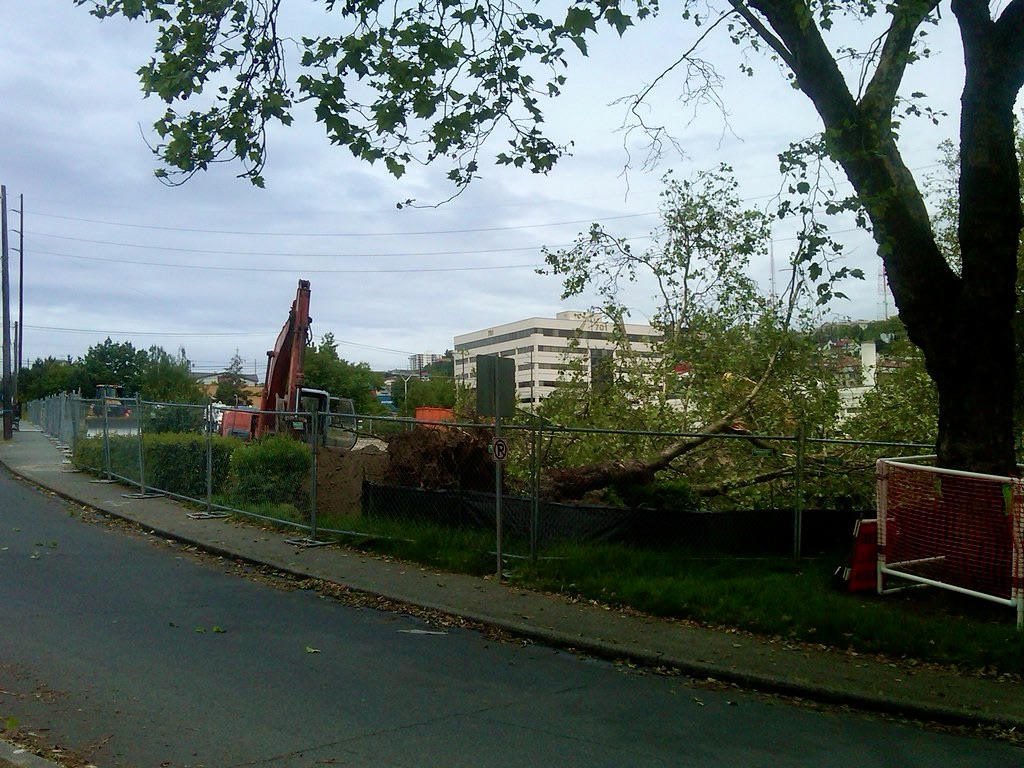Broader Tree Policy Reform Delayed Due to SEPA Appeal
The Seattle City Council has approved an ordinance sponsored by Councilmembers Dan Strauss (District 6) and Alex Pedersen (District 4) requiring that arborists conducting commercial tree work in Seattle be registered with the City. The legislation also establishes education and training prerequisites for gaining and renewing that registration. Council President Debra Juarez (District 5) paid kudos to the bill’s co-sponsors in her remarks, complimenting them for “being so collaborative” and noting that their success “shows that we can work out our differences.”
While remaining upbeat, Strauss paid heed to the fact that the councilmembers would need to wait until later in the year to vote on additional tree protections he had drafted with Pedersen that are going through the State Environmental Policy Act (SEPA) appeal process. A group of developers led by the Master Builders Association of King and Snohomish Counties (MBAKS) filed an appeal arguing the restrictions were too onerous, but some tree activists contend the proposal doesn’t go far enough.
Shortly after a draft of the proposed tree policies was made available to the public in February, Steve Zemke of TreePAC published a post encouraging his supporters to contact the Seattle Department of Construction and Inspections (SDCI) to voice their opposition to policies that he cast as not offering enough protection. TreePAC filed an appeal on March 10th, but withdrew it a few days later after seeing MBAKS had appealed too — albeit from the opposite direction.
“We are not impressed with their SEPA checklist evaluation that removing big trees and then planting little trees is a possible way to increase tree canopy,” Zemke wrote before going on to itemize in detail a list of 21 complaints against the proposed tree protections.
Under Zemke’s leadership, TreePAC successfully appealed a proposed draft tree ordinance back in 2018 forcing the City to withdraw its determination of non-significance on the policy.
Last summer when I interviewed Wes Brinkley, Chair of Seattle’s Urban Forestry Commission, Brinkley expressed frustration at the City’s failure to pass tree protection ordinance since 2009 when an interim ordinance was put into effect.
“The current system is very poor. It’s imprecise, unclear, and full of loop holes — also, heavily prone to misinformation and legal challenges,” Brinkley said. “If we can remove all that conflict from the system and say up front exactly what they have to pay, then trees on a property become a component of a property’s value — not subject to challenges of perspective — which removes trees from being a risk.”
At that time, Brinkley shared a list of the Urban Forestry Commission seven key recommendations, number two of which was tree service provider registration. In addition to potential property damage or injury that could be sustained during a tree removal by inexperienced workers, Brinkley also emphasized that the measure would help to reduce predatory cutting, which occurs when tree removal companies scare property owners in an effort to drum up revenue.

In addition to requiring registration for arborists, SDCI’s proposed tree protections include updates to:
- Expand the types and sizes of trees that are regulated, including a new definition of significant trees that acknowledges differences in tree species’ size;
- Apply replacement requirements to include significant trees 12 inches in diameter and larger;
- Simplify provisions, including allowing development standards to be modified to aid in tree preservation as an administrative process without requiring Design Review, while maintaining Design Review as an option in multifamily and commercial zones;
- Establish a payment option for tree replacement (payment in lieu);
- Support tracking of tree preservation, removal, and replacement; and
- Increase penalties 50% for violations of tree regulations.
Although Strauss and Pedersen were apparently able to put aside some differences as they worked together to create their tree ordinance protection proposal, outside pressures from organizations like TreePAC continue to present hurdles to the process. It remains to be seen whether or not the Hearing Examiner will rule in favor of the City’s determination of non significance or the appellants. As it stands, despite the councilmembers shared support for registering arborists, tree protection policy remains a hot topic in Seattle — and in other area cities as well.
In Bellevue, a group called Trees 4 Livability has begun advocating for increased tree protections, citing that the City of Bellevue’s policies are among the most lax in the Puget Sound region. In Bellevue, a private property owner can cut down five significant trees (defined as 8 inches or greater in diameter) without filing for a permit and Trees 4 Livability is seeking for the policy to be amended so that all significant tree removals require a permit. That recommendation, among others, can be found in their 2022 Bellevue Tree Code Study.
Clarification: This piece was updated at 9:55am Wednesday to clarify that developers had appealed the tree ordinance.
Correction: This article was updated to reflect that the draft tree protections were released by the Seattle Department of Construction and Inspections and not proposed by Councilmember Strauss and Pedersen.
Natalie Bicknell Argerious (she/her) is a reporter and podcast host at The Urbanist. She previously served as managing editor. A passionate urban explorer since childhood, she loves learning how to make cities more inclusive, vibrant, and environmentally resilient. You can often find her wandering around Seattle's Central District and Capitol Hill with her dogs and cat. Email her at natalie [at] theurbanist [dot] org.



